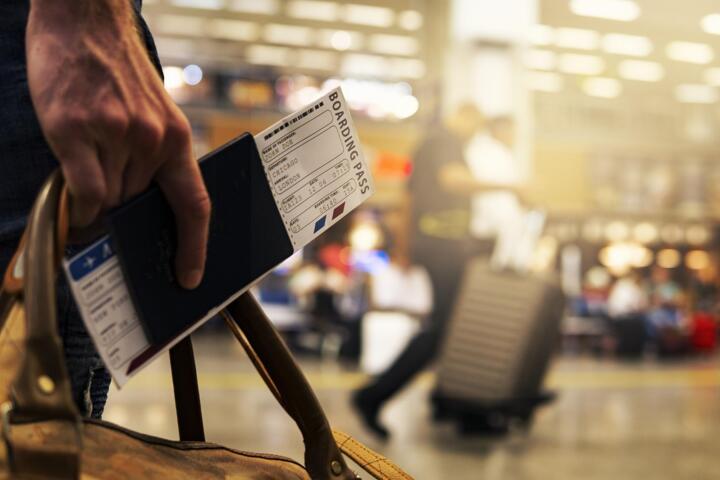Business travel is a vital part of many careers and industries, but it comes with its own set of challenges. From tight schedules to unexpected expenses and constant movement, traveling for work can quickly become stressful. However, with smart planning and practical strategies, business trips can be both productive and enjoyable. Understanding how to navigate logistics, optimize time, and maintain work-life balance on the road is crucial for professionals who travel regularly.
Why Business Travel Matters
Despite the rise of remote communication tools, face-to-face meetings and in-person networking remain essential for building trust, closing deals, and developing professional relationships. Business travel allows you to:

-
Strengthen Client Relationships: Meeting in person demonstrates commitment and professionalism.
-
Expand Opportunities: Conferences, trade shows, and networking events can open doors to new partnerships.
-
Gain Market Insights: Visiting new locations gives firsthand knowledge about trends, competitors, and customer preferences.
Smart business travel maximizes these benefits while minimizing stress and wasted time.
Step 1: Plan Ahead Strategically
Successful business travel begins with thorough preparation:
-
Schedule Wisely: Align flights, meetings, and accommodations to minimize downtime. Consider time zone differences when planning calls or events.
-
Book Early: Early booking often provides better rates for flights, hotels, and transportation.
-
Prioritize Objectives: Identify the most important meetings or events and structure your itinerary around them.
Pro Tip: Use digital calendars and travel apps to sync flights, meetings, and deadlines, ensuring nothing is overlooked.
Step 2: Optimize Your Travel Budget
Business trips can be costly, but careful planning reduces unnecessary expenses:
-
Airfare: Compare airlines, consider flexible dates, and use company-approved travel portals for discounts.
-
Accommodation: Choose hotels near meeting locations or public transportation to save time and commuting costs.
-
Per Diem Planning: Set daily limits for meals, transportation, and incidental expenses.
Example: Booking a hotel with free breakfast and shuttle services can save hundreds per trip without sacrificing comfort.
Step 3: Pack Smartly for Efficiency
Packing efficiently is key for smooth business travel:
-
Travel Light: A carry-on is often sufficient, reducing baggage fees and waiting times.
-
Essential Work Tools: Laptop, chargers, presentation materials, and important documents should be easily accessible.
-
Versatile Clothing: Pack clothing suitable for meetings, casual events, and any unexpected occasions.
Tip: Roll clothing to maximize space and avoid wrinkles, and keep a small toiletry kit ready to avoid last-minute purchases.
Step 4: Use Technology to Stay Productive
Business travelers can maintain productivity even on the road:
-
Cloud Storage: Access files from anywhere with cloud services like Google Drive or Dropbox.
-
Communication Tools: Video calls, instant messaging, and email apps help you stay connected with the office.
-
Expense Tracking Apps: Record receipts and track spending in real time to simplify reporting.
Advice: Preload documents and presentations on devices to prevent connectivity issues from disrupting work.
Step 5: Maximize Time During Travel
Time management separates productive trips from wasted ones:
-
Use Transit Wisely: Work on reports, emails, or calls during flights or train rides.
-
Combine Meetings Efficiently: Schedule back-to-back appointments to minimize travel between locations.
-
Plan Downtime: Allocate time for rest to avoid fatigue, which can reduce effectiveness in meetings.
Example: A two-hour layover can be used for strategic planning or reviewing notes rather than idling at the airport.
Step 6: Maintain Health and Wellbeing
Travel can take a toll on physical and mental health if neglected:
-
Stay Hydrated: Air travel can be dehydrating, so drink plenty of water.
-
Move Regularly: Stretching or walking between meetings prevents stiffness and improves circulation.
-
Eat Wisely: Opt for balanced meals to sustain energy throughout the day.
Pro Tip: Adjust sleep schedules gradually to adapt to time zones and reduce jet lag, ensuring you remain alert during critical meetings.
Step 7: Leverage Networking Opportunities
Business travel is not just about meetings; it’s also a chance to expand your professional network:
-
Attend Events: Conferences, seminars, and industry mixers can yield valuable contacts.
-
Engage Colleagues and Clients: Informal interactions over meals or coffee can strengthen relationships.
-
Follow Up: Send a brief email or message post-trip to maintain connections and reinforce key discussions.
Example: Meeting a potential client over breakfast at a conference could lead to a partnership that outlasts the trip itself.
Step 8: Review and Reflect After Each Trip
Continuous improvement ensures future trips are more efficient:
-
Assess Costs: Compare planned expenses versus actual spending to identify savings opportunities.
-
Evaluate Productivity: Review meetings, outcomes, and tasks accomplished during the trip.
-
Plan for Next Time: Note what worked well and what could be improved for future travel.
Advice: Keeping a travel journal or digital record helps streamline subsequent trips and enhances decision-making.
Conclusion
Business travel is more than commuting for meetings—it’s an opportunity to advance your career, strengthen relationships, and gain insights that cannot be replicated virtually. By planning strategically, managing expenses, packing efficiently, leveraging technology, prioritizing health, and maximizing networking opportunities, business trips can become productive, cost-effective, and even enjoyable experiences.
Key Takeaway: Smart business travel is about preparation, efficiency, and intentionality. With the right approach, every trip contributes not only to immediate goals but also to long-term professional growth and success.
